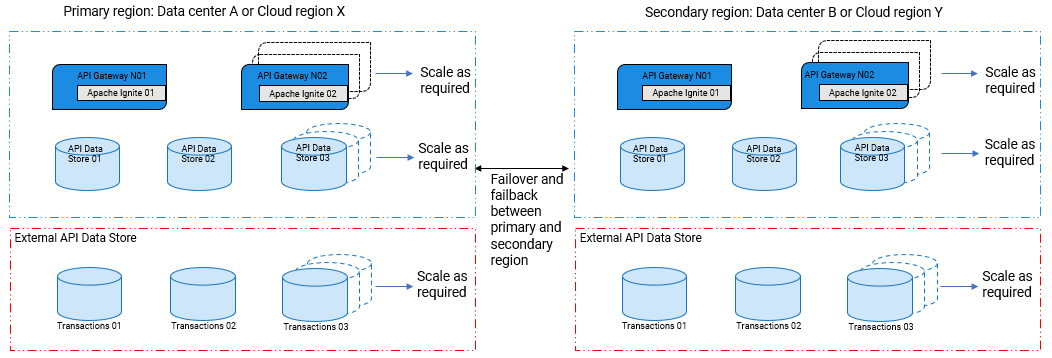High Availability and Disaster Recovery (HADR) solution
The architecture of HADR is as follows:
The keypoints about HADR solution are as follows:

Use this setup, if the Recovery Time Objective (RTO) ranges from 15 minutes to an hour or more.

Each data center or the cloud region hosts an independent cluster of its own.

Primary data center serves the traffic and is exposed to the client and you must turn on the secondary data center only when the primary data center goes down due to a disaster.

Backup snapshots are taken on a periodic basis and stored in a suitable externalized storage (For example, AWS S3 or Azure Blobs).

For
Cold standby mode. Secondary data center remains switched off until failover operation. Hence, this approach saves cost.

For
Warm standby mode. API Data Store is operational in the secondary data center. As API Data Store is operational and data is restored from the latest backup snapshots in secondary data center, this approach reduces RTO, but the cost is higher compared to Cold standby mode.

After restoring the snapshot, all the
API Gateway nodes must be started.

This architecture supports failback to primary data center.

